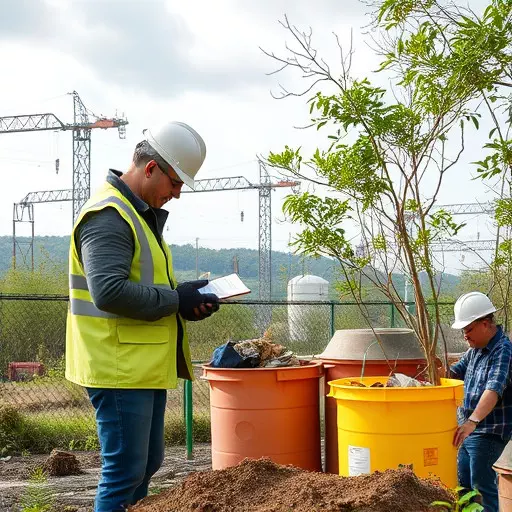Water pollution control audits, encompassing environmental compliance inspections, review industrial operations against regulations to prevent water pollution. These audits cover water discharge, hazardous waste management, and operational procedures, identifying and rectifying potential sources of contamination. Hazardous waste management audits specifically focus on secure storage, handling, and transport to safeguard ecosystems and human health. By integrating these audits into regulatory frameworks, industries are held accountable, encouraged to adopt best practices, and prompted to implement effective pollution control measures, ultimately preserving water resources.
Water pollution control audits are pivotal in ensuring the integrity of our aquatic ecosystems. This comprehensive overview delves into the critical role of these audits, highlighting their contribution to environmental compliance inspection and the prevention of water pollution. By exploring established environmental regulatory frameworks, we gain insights into effective strategies. Furthermore, integrating hazardous waste management audit practices enhances overall water pollution control efforts, fostering a sustainable future.
- Understanding Water Pollution Control Audits: A Comprehensive Overview
- The Role of Environmental Compliance Inspection in Preventing Water Pollution
- Integrating Hazardous Waste Management Audit into Water Pollution Control Strategies
Understanding Water Pollution Control Audits: A Comprehensive Overview

Water pollution control audits are comprehensive assessments designed to ensure adherence to environmental regulatory frameworks and promote sustainable practices. These inspections go beyond surface-level observations, delving into various aspects of an establishment’s operations to evaluate their environmental compliance. From monitoring water discharge to examining hazardous waste management protocols, each audit is tailored to identify potential sources of pollution and offer actionable recommendations for mitigation.
An environmental compliance inspection involves a thorough review of documentation, facility conditions, and operational procedures. This includes checking for proper waste disposal methods, treatment processes, and adherence to set pollution control standards. Moreover, these audits often encompass hazardous waste management audits, focusing on the safe storage, handling, and transportation of potentially harmful substances to prevent ecological and human health damage.
The Role of Environmental Compliance Inspection in Preventing Water Pollution

Environmental compliance inspections play a pivotal role in preventing water pollution by ensuring that industries and facilities adhere to environmental regulatory frameworks designed to protect water bodies. These thorough audits, conducted by specialized teams, involve meticulous scrutiny of operational processes, waste management practices, and discharge systems. By identifying non-compliance with regulations related to hazardous waste management, emissions standards, and effluent quality, inspectors can pinpoint potential sources of pollution before they enter aquatic ecosystems.
Moreover, environmental compliance inspections facilitate the implementation of effective pollution control measures. During these audits, professionals not only identify violations but also offer guidance on best practices for sustainable operations, including proper hazardous waste disposal, treatment technologies, and innovative solutions to minimize water pollution. This proactive approach fosters a culture of accountability and stewardship among industries, ultimately contributing to the preservation of water resources for current and future generations.
Integrating Hazardous Waste Management Audit into Water Pollution Control Strategies

Integrating Hazardous Waste Management Audits into water pollution control strategies is a multifaceted approach that leverages environmental compliance inspection as a powerful tool. These audits, conducted under the framework of established environmental regulatory guidelines, play a pivotal role in identifying and mitigating sources of contamination. By scrutinizing operations and waste management practices, auditors can uncover potential violations and ensure facilities adhere to stringent environmental standards.
This integrated approach not only enhances water quality but also fosters a culture of sustainability. Hazardous waste management audits provide a comprehensive view of an operation’s impact on the environment, enabling proactive measures to reduce, reuse, and recycle materials that once contributed to pollution. As a result, organizations can strive for ecological balance while meeting their operational needs within the confines of regulatory compliance.


